


Les origines du MI 35 doivent être trouvées dans le MI 24. Le MI 24 souvent appelé le char volant a été le premier hélicoptère d'attaque à avoir un armement et un blindage puissant. En Russie il a reçu le surnom de bossu et à l'Occident il est connu sous le nom de libellules de la mort.
Le premier prototype vola en 1970 suivi en 1974 des premières versions. En 1979 avec l'invasion soviétique de l'Afghanistan le MI 24 connaît sa première expérience au feu. Mais avec l'arrivée des missiles américains Stringer aux mains des moudjahiddines un crash programme a été lancé afin de protéger cet hélicoptère
Depuis la fin de l'URSS le MI 24 été utilisé de façon intensive au sein de l'armée Russe notamment dans les guerres du Caucase avec l'invasion en Tchétchénie en 1994. Pour « booster » les ventes du MI 24 à l'exportation des systèmes et de l'avionique d'origine occidentale ont été intégrés dans les toutes dernières versions construites.
Le MI 35.
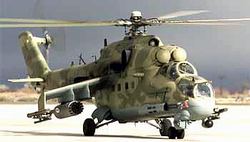 |
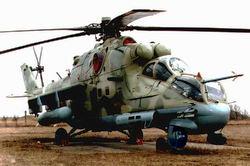 |
| MI 35 P | Mi 35 PM |
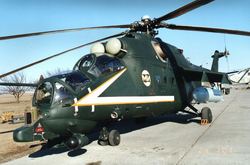 |
 |
| MI 35 PN | MI35 M |
Le MI 35 est un hélicoptère de combat et de transport c’est la version export du MI 24 V Hind. E .Il a été construit pour les missions suivantes.
Engagement de cibles au sol.
Support feu des unités au sol.
Interdiction aérienne du champ de bataille avec les missiles Igla V qui sont des missiles air air guidés.
Il est équipé avec des systèmes électroniques complexes qui incluent les systèmes de visée et d'observation 9K113Ket OPS-24N ainsi que des systèmes radio puissants .
Mais cet hélicoptère peut-être suivant les besoins être rééquipé et armé pour diverses missions.
 |
Version Combat il amène alors sous ses ailes des pods de roquettes et des équipements additionnels.
 |
 |
Caractéristiques
Poids 10.8 T ( max 12 )
Poids ordre de combat2400 kg
Equipage 2 + 8
Longueur 17.57 m
Largeur 3.67m
Hauteur 3.390
Rotor diamètre:17.3 m
Moteur 2 Klimov TV3-117 série II turboshafts 3266 kW
Vitesse 335km/h (croisière 260km/h)
Autonomie(à 500 m, ) 500 km
avec réservoirs auxiliaires 620 kms
Plafond 5750 m
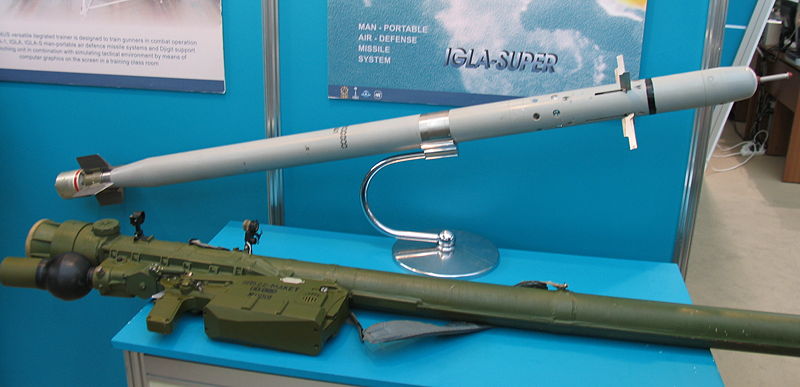 |
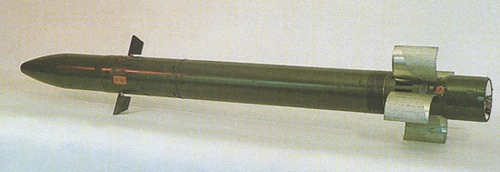 |
|
| Igla | Ataka |
.jpg) |
 |
| Venezuela | Tchéquie |
The origin of the M35 wild found in the Mi 24
The Mi 24 sometimes called flying tank was the first attack helicopter to feature heavy armour and be armed with a large calibre cannon. In Russia he reiceve the nicknamed of the 'hunchback or the 'dragonfly of the death.
The first prototype flight in 1970, follow in 1974 by the first versions In 1979 with the soviet invasion of Afghanistan the Mi-24 has its first combat experience But with the arrival of US-made Stinger in the hands of Mujhadeen a crash programme to fit defensive systems to the Mi-24 was begun.Since the end of the USSR Mi-24 has seen extensive service with the Russian Army
Caucasus war with the invasion of Chechnya in 1994.
To boost the Mi-24's appeal to export , western sensors and avionics have been integrated into the latest new-build versions.
MI 35
 |
 |
| MI35 P | MI35 PM |
 |
 |
| MI 35 PN | MI 35 M |
 |
 |
 |
The helicopter is powered by two Klimov TV3-117 series II turboshafts of 3266 kW, and AI-9V an auxiliary power plant. And he could be refurbished during operation
As on the MI 24 the pilot-operator cabin is fitted with override controls and instrument panel with pilot-navigation equipment. It ensures easy flight in IFR weather conditions and provides the pilot-operator with capability to fly and land the helicopter when the pilot can not do it. It also provides training capability. The helicopter is fitted with a pilot’s warning radiation station The pilot and pilot/operator cabins are reliably protected from 7.62 mm bullets with front armoured glass and side armor plates
The helicopter is also fitted with electronic, communications and navigation aids to ensure day and night flights in VFR and IFR weather conditions and enroute flight.The radio communications system ensures reliable two-way radio communication with ground stations, other helicopter’s radio aids, intercom communication between crew members to navigate the helicopter or land it in poor visible conditions
He can airlift in cargo 2400 kg on external sling or up to 1500 kg in cargo cabin
The fuel tanks are filled with porous fillers to prevent fuel leaks and explosions when heat.
Armament
twin 23 mm cannon in nose Gsh-23L turret-mounted gun for Mi-35 or 30mm gun Gsh-30 for Mi-35P
Ataka missile system Shturm-V
4 bombs 50/100/250-kg or 2 bombs of 500 kg
4 rocket launchers UNM units of 80 mm (20 rockets)
4 rocket launchers UNM 240 mm
3 machine guns or grenade launcher, or two universal units each with Gsh-23L gun in tne cabine
The troopers can use personal weapons through open blisters.
2 ASO-2V shaft dispenser
Optronic,ECM , infrared suppression exhaust mixer boxes over exhaustengine dusts.
Anti-missile means to provide protection against missiles
Modernization program
Avionic electronic and armement
control navigation and indication system with LCD computers, GPS system GEO-ONV1 for operation of night-vision goggles GOES-331 to acquire data via thermal vision and low-level TV channels, as well as from a laser range finder. adaptation of cockpit lighting equipment
Mechanic
New main rotor system and cruciform tail rotor
 |
 |
.jpg) |
| Venezuela |